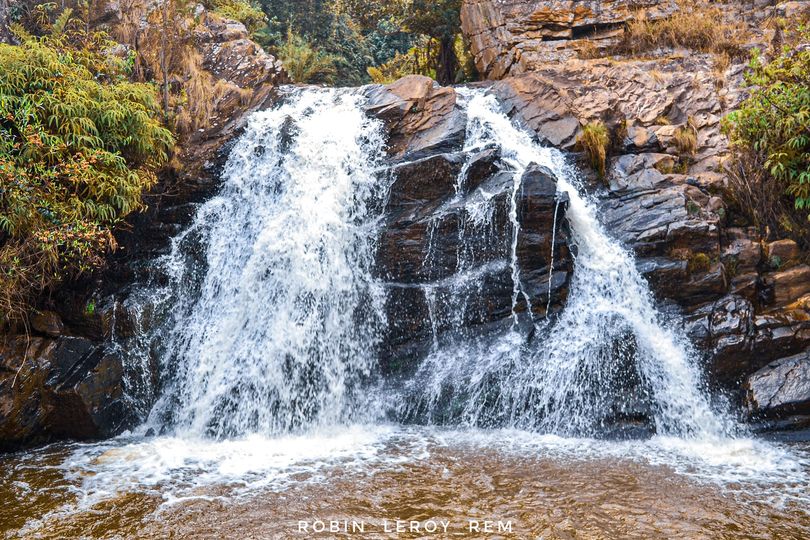The falls ofAgasumo ka Mwarolocated in the Mwaro province in central Burundi, are much more than a natural wonder; they are a true testimony to Burundian history and culture. Framed by a verdant landscape and rolling hills, the falls are often seen as a spiritual sanctuary and symbolic site for the local population. This article invites you to discover this natural treasure, while exploring its cultural significance and tourism potential.
1. Falls location and characteristics
Agasumo ka Mwaro Falls are located in the commune of Ndava, some 60 kilometers from Bujumbura, Burundi's economic capital. Nestled in the heart of the country's mountains, they are distinguished by their height and the power of the water as it rushes over a natural basin surrounded by rocks and lush vegetation.
The water is usually clear, especially during the dry season, offering visitors a spectacular view. The falls reach their full potential during the rainy season, when the water flow becomes more intense, creating an impressive visual and sound spectacle. Surrounded by legends, the waterfall is also nicknamed the "Sacred Place of the Spirits" by the locals, who consider it a source of energy and purification.
2. History and Mythology Associated with Waterfalls
Agasumo ka Mwaro is admired not only for its natural beauty, but also for its spiritual and historical value. According to local stories, the waterfall is inhabited by benevolent spirits called "Abasokuru," the ancestors of the hills, who watch over the area. These stories have fueled rituals and ceremonies for generations, creating a deep bond between the community and the waterfall.
Traditional ceremonies are still held at certain times of the year to honor these spirits, asking for blessings or protection from the community. These rituals often include symbolic offerings and ritual dances, reinforcing the spiritual and cultural heritage that surrounds this site.
3. Cultural and touristic importance
The Agasumo ka Mwaro site plays a key role in the development of tourism in Burundi. Local authorities and community organizations are working together to improve access to the falls, creating trails and infrastructure to facilitate visits while preserving the ecological and cultural integrity of the site. Local guides, often well-informed about the history and spiritual significance of the waterfall, help visitors better understand the importance of the falls to the local community.
In addition to domestic visitors, more and more foreign tourists are showing an interest in Agasumo ka Mwaro, attracted by the opportunity to explore an authentic and little-commercialized site. Ecotourism programs are being developed to promote sustainable tourism, to support local communities while minimizing environmental impact.
4. The Falls as a Symbol of Nature Conservation
Because of their status as a natural and sacred site, the Agasumo ka Mwaro falls have also become a symbol of biodiversity conservation in Burundi. Local initiatives encourage the preservation of the surrounding ecosystem, by raising awareness of ecological issues. Reforestation programs around the falls and sustainable water management aim to protect this precious resource and guarantee the survival of the ecosystem.
5. How to visit Agasumo ka Mwaro Falls
To visit the Agasumo ka Mwaro Falls, it is advisable to go with a local guide. Organized tours are available from Bujumbura or Gitega, offering a rewarding experience that often includes visits to nearby historical and cultural sites. Visitors must be prepared to walk up sometimes steep paths to reach the site, but the reward is well worth the effort: the spectacular views and serenity are worth every step.
Conclusion
The Agasumo ka Mwaro waterfalls represent a unique natural and cultural asset in Burundi. They offer visitors not only a memorable visual experience, but also a glimpse into the spiritual and historical soul of the country. These falls, guardians of legends and witnesses to Burundi's heritage, deserve to be protected and enhanced, both for their natural beauty and for their role in strengthening Burundi's cultural identity.


There are no reviews yet. Be the first one to write one.